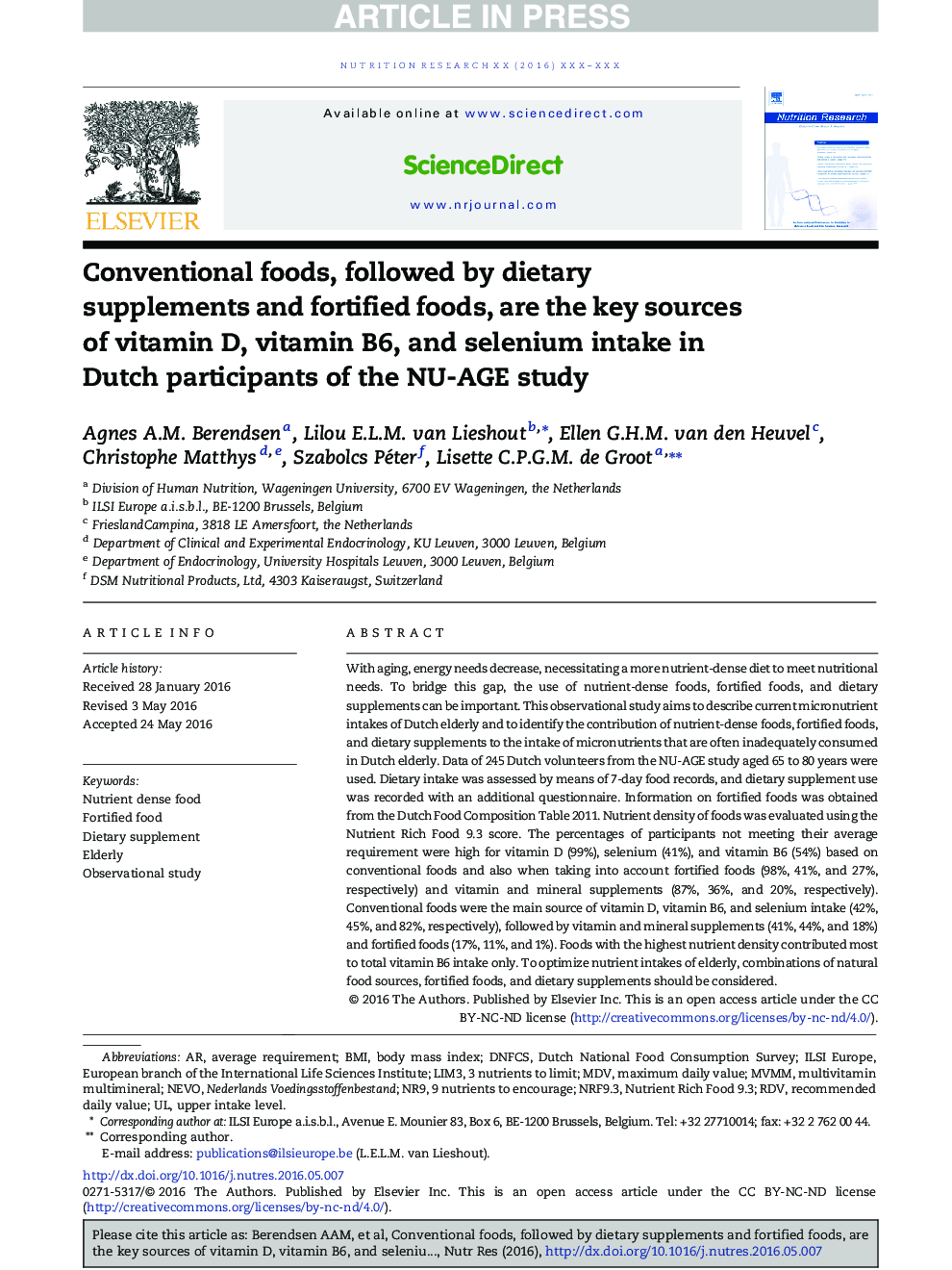| Article ID | Journal | Published Year | Pages | File Type |
|---|---|---|---|---|
| 5588725 | Nutrition Research | 2016 | 11 Pages |
Abstract
With aging, energy needs decrease, necessitating a more nutrient-dense diet to meet nutritional needs. To bridge this gap, the use of nutrient-dense foods, fortified foods, and dietary supplements can be important. This observational study aims to describe current micronutrient intakes of Dutch elderly and to identify the contribution of nutrient-dense foods, fortified foods, and dietary supplements to the intake of micronutrients that are often inadequately consumed in Dutch elderly. Data of 245 Dutch volunteers from the NU-AGE study aged 65 to 80 years were used. Dietary intake was assessed by means of 7-day food records, and dietary supplement use was recorded with an additional questionnaire. Information on fortified foods was obtained from the Dutch Food Composition Table 2011. Nutrient density of foods was evaluated using the Nutrient Rich Food 9.3 score. The percentages of participants not meeting their average requirement were high for vitamin D (99%), selenium (41%), and vitamin B6 (54%) based on conventional foods and also when taking into account fortified foods (98%, 41%, and 27%, respectively) and vitamin and mineral supplements (87%, 36%, and 20%, respectively). Conventional foods were the main source of vitamin D, vitamin B6, and selenium intake (42%, 45%, and 82%, respectively), followed by vitamin and mineral supplements (41%, 44%, and 18%) and fortified foods (17%, 11%, and 1%). Foods with the highest nutrient density contributed most to total vitamin B6 intake only. To optimize nutrient intakes of elderly, combinations of natural food sources, fortified foods, and dietary supplements should be considered.
Keywords
Related Topics
Life Sciences
Biochemistry, Genetics and Molecular Biology
Endocrinology
Authors
Agnes A.M. Berendsen, Lilou E.L.M. van Lieshout, Ellen G.H.M. van den Heuvel, Christophe Matthys, Szabolcs Péter, Lisette C.P.G.M. de Groot,
